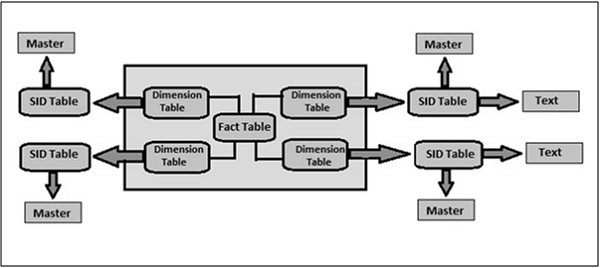
- SAP BW on HANA Tutorial
- SAP BW on HANA - Home
- SAP BW on HANA - Overview
- SAP BW Basics
- SAP HANA Basics
- SAP BW on HANA - Architecture
- SAP BW on HANA - Benefits
- Native HANA Modeling
- BW Data Warehousing
- BW Database Version
- SAP BW on HANA - Modeling Tools
- SAP BW on HANA - Migration
- SAP BW on HANA - Migration Tools
- SAP BW on HANA - Data Mngmt
- HANA Optimized InfoCubes
- Composite Providers
- Composite Providers in HANA
- SAP BW on HANA - Advanced DSOs
- SAP BW on HANA - Hybrid Modeling
- HANA Views for BW InfoProviders
- SAP BW on HANA - HANA Live
- Data Provisioning
- SLT Replication HANA
- SLT Replication BW
- DB Connect
- HANA View for InfoCube
- SAP BW on HANA - Process Chain
- HANA vs BWA
- SAP BW on HANA - Authorization
- Consultant Responsibilities
- SAP BW on HANA Useful Resources
- SAP BW on HANA - Quick Guide
- SAP BW on HANA - Useful Resources
- SAP BW on HANA - Discussion
SAP BW on HANA - BW Data Warehousing
BI objects is divided into multiple BI content areas so that they can be used in an efficient way. This includes the content area from all the key modules in an organization - SCM, CRM, HR, Finance Management, Product Lifecycle, Industry solutions, Non-SAP data sources, etc.
Star Schema and Extended Star Schema
In Extended Star Schema, fact tables are connected to the dimension tables and the dimension table is connected to the SID table. The SID table is connected to the master data tables. In Extended Star Schema, Fact and Dimension tables are inside the cube; however, SID tables are outside the cube. When you load the transactional data into the Info cube, Dim Ids are generated based on SIDs and these Dim ids are used in the fact tables.
In Extended Star Schema, one fact table can connect to 16 dimension tables and each dimension table is assigned with 248 maximum SID tables. SID tables are also called Characteristics and each characteristic can have master data tables like ATTR, Text, etc.
ATTR − It is used to store all the attribute data.
Text − It is used to store description in multiple languages.

InfoArea and InfoObjects
InfoObjects are known as the smallest unit in SAP BI and are used in InfoProviders, DSOs, Multi providers, etc. Each InfoProvider contains multiple InfoObjects.
InfoObjects are used in reports to analyze the data stored and to provide information to decision makers. InfoObjects can be categorized into the following categories −
- Characteristics like customer, product, etc.
- Units like quantity sold, currency, etc.
- Key figures like total revenue, profit, etc.
- Time characteristics like year, quarter, etc.
InfoObjects are created in the InfoObject catalog. It is possible that an InfoObject can be assigned to a different Info Catalog.
InfoArea in SAP BI is used to group similar types of objects together. InfoArea is used to manage InfoCubes and InfoObjects. Each InfoObject resides in an InfoArea and you can define it in a folder which is used to hold similar files together.
Transformation Process
Transformation process is used to perform data consolidation, cleansing and data integration. When data is loaded from one BI object to other BI object, transformation is applied on the data. Transformation is used to convert a field of source into the target object format.